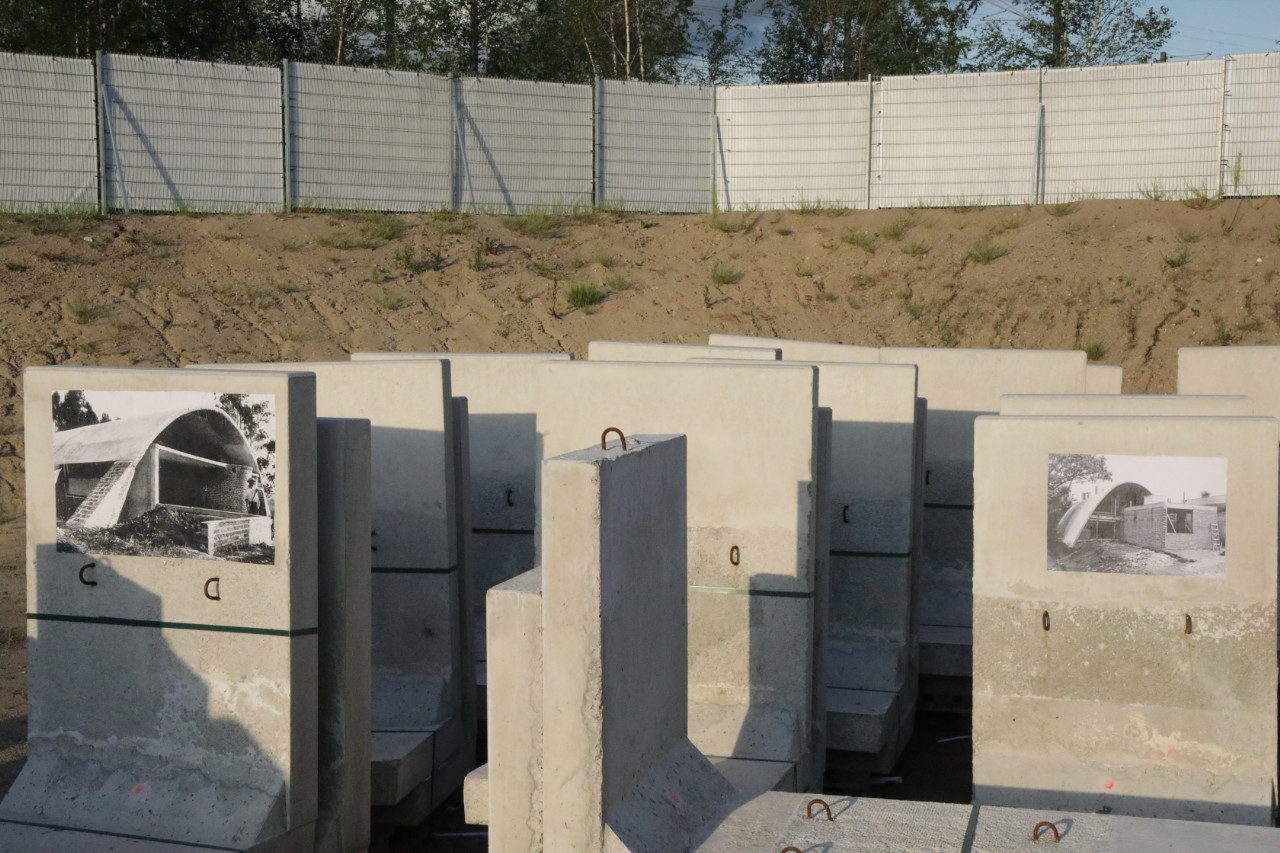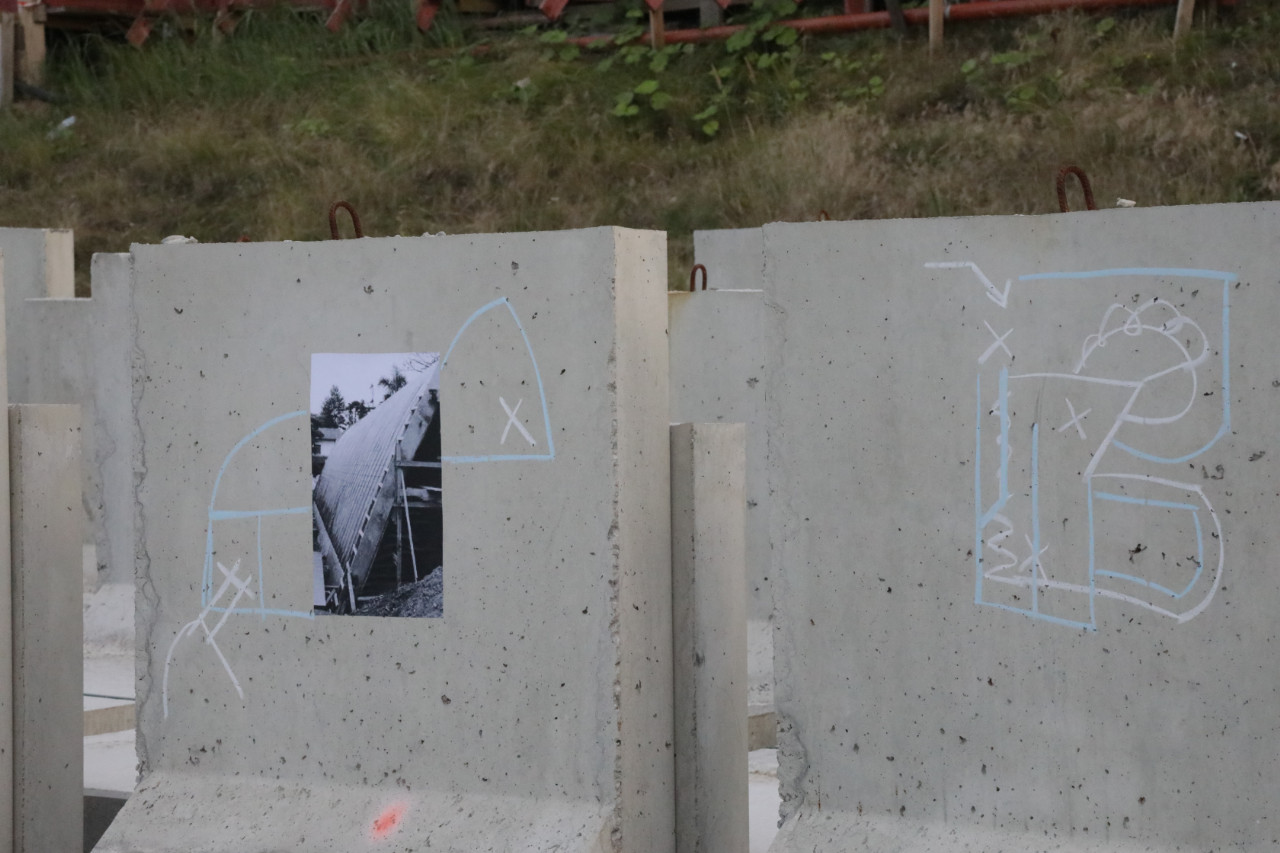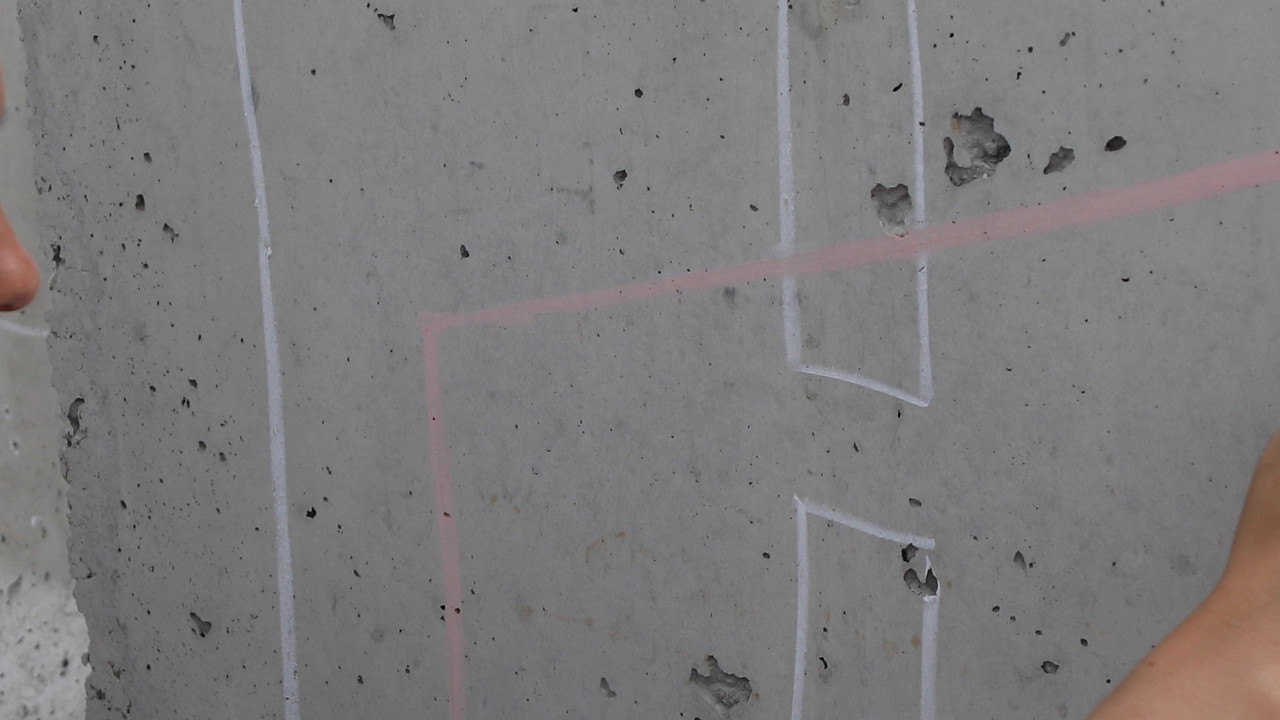installation views, HafenCity Hamburg















This work’s central concern is a discussion of the construction site scaffold in relation to the scaffold as object and method of an algorithmic operation. Based on the provocative ideas of the socialist architect Sergio Ferro, the point is to set the digital fabrication of public space by algorithmic infrastructures against the physical scaffold as a location for economic-political confrontation. The work, consisting of a public sculptural installation, performance and intends to sound out the capacity for agency for a praxis that organises itself politically to entwine work, space and infrastructure; and will refer to current developments in the public space.
This work, as seen in the images, was installed at a construction side at the gateway to the newly built BaakenQuarter in Hamburg's HafenCity. The installation consists of copies of photographs by Sergio Ferro glued onto stone (construction side material) where it may reside for a while. Around the photograph, scroes were drawn. The source for the drawings is based on the apartment's rearrangement of the ground plan's form and size; as most of the to be established forms may not serve the future populations. The new housings' forms and shapes are again performed by the performers. The drawings, morover, articulate workers' tasks on the construction side. Housing / labour interact and suggest different interactions as laid down by the interests of market and state.
In addition, a sound installation within the sculptural stone setting (see the images) articulates his spoken words (orginally in Portugues; translated into English which can be heard in another corner). Furthermore, several of Ferro’s ideas have been discussed in a workshop with a few performers. In this setting, the performers developed a short choreography based on the concept of scaffolding; which has been performed on the site at intervalls. The performance of scaffolding refers to the invisible labour in building – and development projects; and the devalorization of the labourer’s bodies; in the process of our work, these bodies will be equipped with the surplus produced through our collective affective relationalities.
The Scaffold refers to both, construction side physical labour, as well as to the algorithmic sca old as both a method and object in algorithmic infrastructure - and logistics; and belongs to tools, among which subversive knowledges and peformances are emering and articulating. The key references on which this work draws are, amongst others, the architect Sérgio Ferro‘s marxist architectural criticism, which emphasises the socio-economic transformation of built space as the politics of the material and of social class.
Sérgio Ferro is a Brazilian architect who was born in 1938. He is a graduate of the University of São Paulo, where he also taught. Having been exposed to the realities of the construction site, he focuses particularly on questions of labour and the conditions of production. As a member of Arquitectura Nova, a radical architecture group which he formed with Flávio Império and Rodrigo Lefèvre, he critiqued Brazil‘s modernist impulses, which he viewed as excluding the vast majority of Brazilians who were living in poverty. e group took part in urban actions and proposed strategies that would democratise access to architecture, as well as the design and building processes. ey described their work as creating an aesthetics of poverty and a poetics of economy, envisioning a highly politicised approach to architecture. e Brazilian dictatorship later responded by exiling Ferro alongside his mentor, Vilanova Artigas, and his colleague Rodrigo Lefèvre.
Ferro’s ideas took shape during the 1960s when he was involved in the design of Brasília, the new capital city. The disjunction between the architectural discourse of freedom and democracy that surrounded the project and the reality of the inhumane working conditions on site were formative for Ferro and his critique. He witnessed these conditions rst hand; the low pay, lack of food and rampant dysentery, as well as dangerous building practices that took no account of the risks to workers‘ lives. Based on these experiences, Ferro wrote of architecture as the production of commodity, with its modern practices fostering a division of labour in order to generate value. For Ferro, this attitude was encapsulated in the jargon involved in architectural drawing, which alienated and was indeed largely incomprehensible to the builders. His aim is a departure from the desired transformation of production in favour of design solutions. One of his key ideas was the popular house, which aimed to equip citizens with a support structure to enable them to build houses by themselves.
See text under RESEARCH.